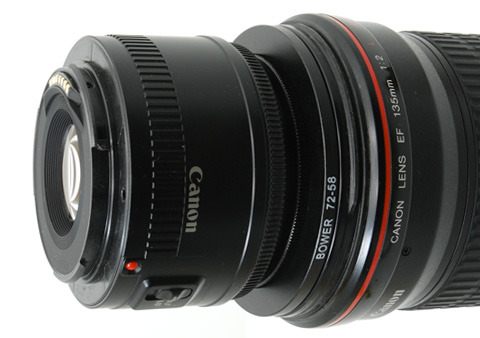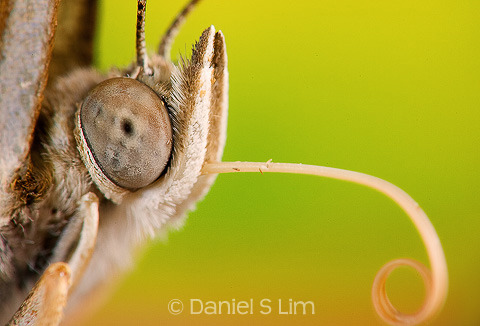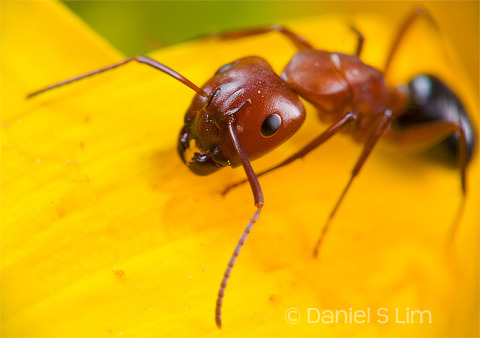SlashTips : How To Take Extreme Macro With Stacked Lenses
Reversed Macro is not exactly a secret in Macro photography, it's the most cost effective way to get extreme close up with a non-macro lens. I've seen several tutorials on these subjects so I thought it would be nice to write something that's much simpler involves no modification or sacrifice camera basic controls, the Stacked Macro with AF lenses.Hoverlfy
Stacked lens using the same concept from reversed macro, instead of reversed mounted on a body you stacked it on a prime lens. The only accessory that needed is a few dollars macro coupler or two depend on the size of lens thread to mount two lenses in opposite direction. The magnification is determined by prime lens divided by reversed lens. For instance, Rev 50mm over 100mm gives you 2x or 2:1 magnification, that's twice bigger than a normal 1:1 life size macro lens! With stacked lenses, you are able to control the aperture setting and AF since the electronic contact is preserved on the prime lens. The downside is extremely shadow Depth of Field (DOF) and you lose infinite focusing distance.
Commonly used macro couplers are 49mm, 55mm, 52mm, 58mm straight same size coupler or step-up or down from one size to another. If you have lens thread that's bigger than the other, you need an additional step up/down rings as to combine with the coupler. Take the $70 Canon 50mm F1.8 II for an example; it has filter size of 52mm so you will need 52mm-58mm coupler to use with Canon 100mm F2.8 Macro lens. If you are fancy for larger magnification, you can try Rev 50mm with larger focus lens like 135mm F2.0L. The components needed are 52mm-58mm macro coupler and a 72mm-58mm step down ring. Try to keep the same size as close as possible to minimize vignetting.
Picture A shown Canon Rev 50mm (Reversed lens) on 135mm (Prime lens) with Magnification of 135/50 at 2.7:1. The focusing area is barely millimeters; it costs about $18 of parts from BHphoto.
Picture A

If you are new to Macro photography, I strongly suggest that you try it with a static subjects and give it a few spins before giving up. Due to extremely narrow DOF, it's awefully difficult to get a keeper from a moving object not to mention the amount of light needed for larger focusing area. The samples shown were taken with Rev 50 on 135 during the Summer. It's a lot of effort but the results are rewarding. Give it a shot.
Hackberry Emperor

Fire Ant

